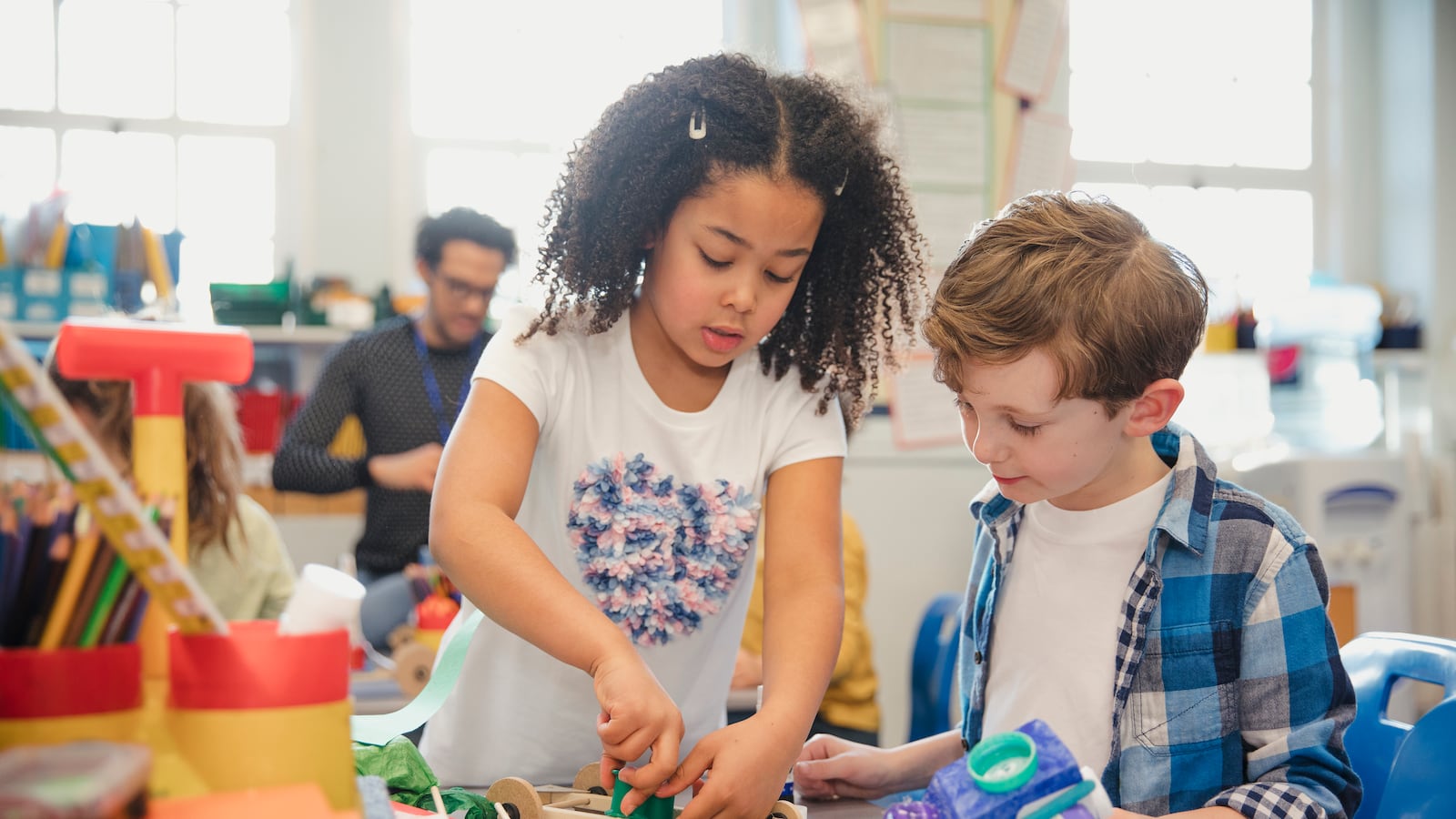I was conferencing with a group of students when I heard the excitement building across my third grade classroom. A boy at the back table had been working on his catapult project for over an hour through our science lesson, into recess, and now during personalized learning time. I watched him adjust the wooden arm for what felt like the 20th time, measure another launch distance, and scribble numbers on his increasingly messy data sheet.
“The longer arm launches farther!” he announced to no one in particular, his voice carrying the matter-of-fact tone of someone who had just uncovered a truth about the universe. I felt that familiar teacher thrill, not because I had successfully delivered a physics lesson, but because I hadn’t taught him anything at all.

Last year, all of my students chose a topic they wanted to explore and pursued a personal learning project about it. This particular student had discovered the relationship between lever arm length and projectile distance entirely through his own experiments, which involved mathematics, physics, history, and data visualization.
Other students drifted over to try his longer-armed design, and soon, a cluster of 8-year-olds were debating trajectory angles and comparing medieval siege engines to ancient Chinese catapults.
They were doing exactly what I dream of as an educator: learning because they wanted to know, not because they had to perform.
Then, just recently, I read about the American Federation of Teachers’ new $23 million partnership with Microsoft, OpenAI, and Anthropic to train educators how to use AI “wisely, safely and ethically.” The training sessions would teach them how to generate lesson plans and “microwave” routine communications with artificial intelligence.
My heart sank.
As an elementary teacher who also conducts independent research on the intersection of AI and education, and writes the ‘Algorithmic Mind’ column about it for Psychology Today, I live in the uncomfortable space between what technology promises and what children actually need. Yes, I use AI, but only for administrative work like drafting parent newsletters, organizing student data, and filling out required curriculum planning documents. It saves me hours on repetitive tasks that have nothing to do with teaching.
I’m all for showing educators how to use AI to cut down on rote work. But I fear the AFT’s $23 million initiative isn’t about administrative efficiency. According to their press release, they’re training teachers to use AI for “instructional planning” and as a “thought partner” for teaching decisions. One featured teacher describes using AI tools to help her communicate “in the right voice” when she’s burned out. Another says AI can assist with “late-night lesson planning.”
That sounds more like outsourcing the foundational work of teaching.
Watching my student discover physics principles through intrinsic curiosity reminded me why this matters so much. When we start relying on AI to plan our lessons and find our teaching voice, we’re replacing human judgment with algorithmic thinking at the very moment students need us most. We’re prioritizing the product of teaching over the process of learning.
Most teachers I talk to share similar concerns about AI. They focus on cheating and plagiarism. They worry about students outsourcing their thinking and how to assess learning when they can’t tell if students actually understand anything. The uncomfortable truth is that students have always found ways to avoid genuine thinking when we value products over process. I used SparkNotes. Others used Google. Now, students use ChatGPT.
The problem is not technology; it’s that we continue prioritizing finished products over messy learning processes. And as long as education rewards predetermined answers over curiosity, students will find shortcuts.
That’s why teachers need professional development that moves in the opposite direction. They need PD that helps them facilitate genuine inquiry and human connection; foster classrooms where confusion is valued as a precursor to understanding; and develop in students an intrinsic motivation.
The problem is not technology; it’s that we continue prioritizing finished products over messy learning processes.
When I think about that boy measuring launch distances with handmade tools, I realize he was demonstrating the distinctly human capacity to ask questions that only he wanted to address. He didn’t need me to structure his investigation or discovery. He needed the freedom to explore, materials to experiment with, and time to pursue his curiosity wherever it led.
The learning happened not because I efficiently delivered content, but because I stepped back and trusted his natural drive to understand.
Children don’t need teachers who can generate lesson plans faster or give AI-generated feedback, but educators who can inspire questions, model intellectual courage, and create communities where wonder thrives and real-world problems are solved.
The future belongs to those who can combine computational tools with human wisdom, ethics, and creativity. But this requires us to maintain the cognitive independence to guide AI systems rather than becoming dependent on them.
Every time I watch my students make unexpected connections, I’m reminded that the most important learning happens in the spaces between subjects, in the questions that emerge from genuine curiosity, in the collaborative thinking that builds knowledge through relationships. We can’t microwave that. And we shouldn’t try.
Timothy Cook, M.Ed., teaches third grade and researches AI’s impact on education. He writes about cognitive development and technology at Psychology Today.



